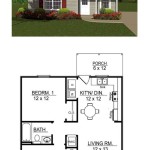Why Is My English Ivy Houseplant Dying?
English ivy (Hedera helix) is a popular houseplant known for its trailing vines and glossy, evergreen foliage. However, even with its hardiness, it can succumb to various issues that can lead to its decline. Here are some reasons why your English ivy houseplant may be dying and how to resolve them:
1. Overwatering
Overwatering is a common culprit in the demise of English ivy. This plant prefers moist but well-drained soil. When the soil remains soggy for extended periods, it can lead to root rot and stem rot, causing the plant to wilt and eventually die. Allow the top few inches of soil to dry out between waterings and ensure the plant has proper drainage.
2. Underwatering
While overwatering is a problem, underwatering can also be detrimental. English ivy requires consistent moisture, especially during hot, dry conditions. Prolonged drought can cause the leaves to turn brown and crispy, eventually leading to plant death. Water the plant thoroughly when the top inch of soil feels dry to the touch.
3. Insufficient Light
English ivy thrives in bright, indirect light. If it is placed in a location with too little light, it will become weak and leggy, with pale foliage and reduced growth. Move the plant to a spot where it receives several hours of bright, indirect light each day.
4. Temperature Fluctuations
English ivy prefers moderate temperatures between 60-75°F (15-24°C). Exposure to extreme heat or cold can cause stress and damage to the plant. Avoid placing your English ivy near heat sources or drafty areas.
5. Pests and Diseases
English ivy is susceptible to various pests, including spider mites, mealybugs, and aphids. These pests feed on the plant's sap, causing yellowing, stunted growth, and leaf drop. Diseases like bacterial leaf spot and powdery mildew can also affect the plant, leading to defoliation and weakening. Regularly inspect your plant for pests and diseases and treat them promptly with appropriate insecticides or fungicides.
6. Nutrient Deficiencies
Over time, your English ivy may experience nutrient deficiencies. Nitrogen deficiency can cause pale foliage and stunted growth, while phosphorus deficiency can affect flowering and root development. Fertilize your plant every few months during the growing season with a balanced liquid fertilizer to provide the necessary nutrients.
7. Repotting Issues
As your English ivy grows, it will eventually require repotting. If the plant is pot-bound, it may become rootbound, restricting growth and causing stress. Regularly check the size of the pot and repot the plant into a larger container when the roots start poking out of the drainage holes.
Conclusion
By understanding the common reasons why your English ivy houseplant may be dying, you can take proactive steps to address the issue and restore its health. Provide your plant with the appropriate watering, light, temperature, and nutrition to create an optimal growing environment. Regular monitoring and prompt attention to any problems will ensure your English ivy thrives and brings beauty to your home for many years to come.

My English Ivy Is Dying And I Don T Know Why

How To Nurse A Dying Ivy Plant Back Life Hunker

How To Nurse A Dying Ivy Plant Back Life

Ivy Plant Is Sick Help
Ivy A Plant By Magpyy On Greg
Lola A Plant By Uncommoncobnut On Greg
What Can I Do To Revive My English Ivy Plant Suppose Watered It Too Much Some Leaves Have Turned Crisp And Brown Quora

A Warning To House Plants Interior Redoux
Ivy A Plant By Traci On Greg

English Ivy Houseplants How To Care For Hedera Helix Indoors








